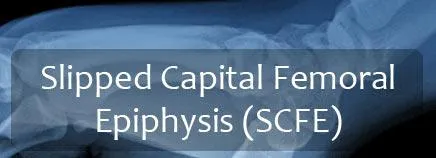
This is my first post on steemit, and I think one of the very first medical content pieces on the platform. It is a summary of one of the recent articles on the American Academy of Family physicians. The content is aimed at residents and undergrads who want to get a quick recap on what is recently published.
1) Classification:
A) According to Stability:
I) Stable: Can ambulate with or without crutches.
II) Unstable: Can't
B) According to duration of symptoms:
I) Acute: <3wks
II) Chronic: >3wks
III) Acute on top of chronic.
2) Epidemiology:
Age: 8-15y Sex: M>F B/L: 18-50%
3) Etiology:
Obesity, Growth spurts, Endocrine disorders (suspect in atypical presentations: age, non-obese, short stature)
Endocrines such as: hypothyroidism, Panhypopituitarism, hypogonadism, GH supplementation
4) Hx & Px:
Hx: Limp, poorly localized pain in hip, groin, thigh or knee.
Px: Antalgic gait, inability to bear weight, decreased internal rotation (most telling sign) , Obligatory ext rot on hip flex (Drehman Sign)
5)DDx:
Common:
- Avulsion of ASIS or AIIS (hx of trauma)
- Apophsitis of ASIS or AIIS (activity related pain)
- Transient synovitis
Less common:
- Septic arthritis (fever, sick pt)
- Legg-Calfe-Perthes ds (4-9y age)
- Fractures (hx of trauma)
- Adductor sprain (activity related pain)
6) Investigation (Xray):
Views:
do AP+frog leg pos in stable; AP+cross table lat if unstable
Severity:
Wilson method:
Epiph. displacement <1/3 metaphysis --> mild
" " 1/3 - 1/2 metaphysis --> mod
" " >1/2 metaphysis --> Severe
XR signs:
Steel's sign: opaque area beneath the epiphyseal line
Wide physis
dec epiphiseal height
Epiphysis not crossing Klein line
7) Complications:
I) Avascular Necrosis (up to 50% in unstable)
II) Chondrolysis (in surgically corrected SCFE)
III) Femoroacetabular impingement (if it heals in a bad position)
8) Treatment:
Crutches + urgent ortho referral --> Stable: single screw insitu fixation
--> unstable: modified Dunn procedure
Disclaimer: This article is intended to be a summary for medical professionals to remember the broad lines of the addressed disorder not as a reference for clinical decision making.
Original article: http://www.aafp.org/afp/2017/0615/p779.html